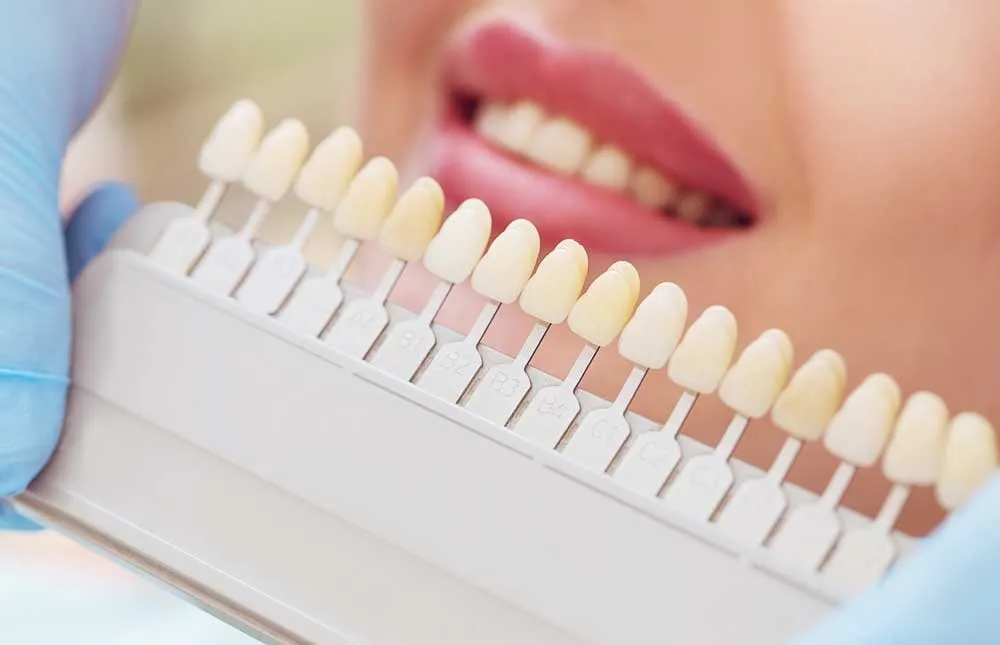Understanding Crowns and Veneers for Whitening
If you’re considering teeth whitening and have dental crowns or veneers, it’s crucial to understand how these restorations interact with whitening treatments. Crowns and veneers are designed to enhance the appearance of your teeth, but their response to whitening agents differs significantly from that of natural teeth. Unlike natural enamel, these dental prosthetics are not porous and cannot be whitened through traditional methods. This means the shade of your crowns or veneers will remain constant while your natural teeth whiten. This disparity can lead to an uneven appearance, making it essential to understand the limitations and explore alternative solutions to achieve your desired smile.
What are Dental Crowns and Veneers
Dental crowns are tooth-shaped caps placed over a damaged or decayed tooth to restore its shape, size, strength, and appearance. Veneers, on the other hand, are thin shells, typically made of porcelain or composite resin, bonded to the front surface of teeth to improve their aesthetics. Both are popular choices in cosmetic dentistry, offering solutions for chipped, discolored, or misshapen teeth. They are fabricated in a dental lab to match the patient’s existing teeth or desired shade. Crowns and veneers provide a durable and natural-looking result, but they do not respond to the same whitening treatments as natural teeth. Crowns are used to restore a single tooth, while veneers are more often used on the front teeth to improve their overall look.
Materials Used for Crowns and Veneers

The materials used in crowns and veneers play a vital role in determining their longevity and aesthetic properties. Porcelain is a common material for both, offering excellent durability and a natural appearance. Porcelain veneers and crowns are stain-resistant, but they can still be affected by factors like dietary habits and oral hygiene. Composite resin is another option for veneers; it is a more affordable alternative but may be more prone to staining and wear over time. The choice of material depends on various factors, including the location of the restoration, the patient’s budget, and the desired cosmetic outcome. Understanding these material differences helps to set realistic expectations for the whitening process and maintenance.
How Crowns and Veneers Affect Whitening
The primary challenge with teeth whitening and crowns or veneers is that the materials do not contain the same porous structure as natural enamel. Whitening agents, such as those found in over-the-counter and professional treatments, work by penetrating the enamel and breaking down stain molecules. Crowns and veneers, however, are designed to be non-porous and stain-resistant, which prevents the whitening agents from penetrating the surface. As a result, while your natural teeth may whiten, the color of your crowns and veneers will remain the same. This can create a mismatched appearance, particularly if the original shade of the crowns or veneers does not blend well with the newly whitened natural teeth. Planning is very important before starting any whitening treatment.
Teeth Whitening for Crowns and Veneers: The Top 5 Things to Know
Whitening crowns and veneers requires a thoughtful approach and understanding of the limitations. Here are the top 5 things to keep in mind if you are considering teeth whitening and have crowns or veneers:
Cannot Whitening Crowns and Veneers
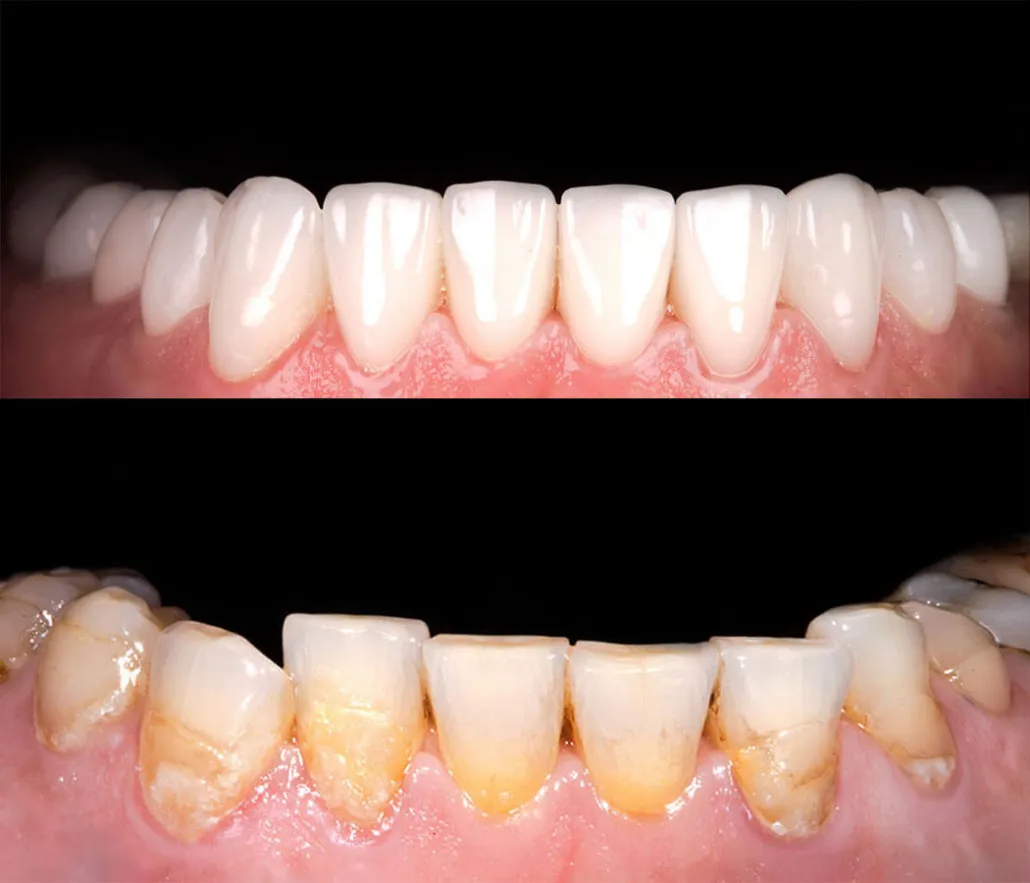
It is impossible to whiten crowns and veneers with traditional teeth-whitening treatments. Whitening agents, whether used professionally or at home, do not affect the color of these dental restorations. Therefore, you’ll need to consider alternative solutions to achieve a consistent and bright smile. The color of crowns and veneers is determined during their fabrication, and that shade is permanent. If your natural teeth whiten, the difference in color will become more apparent, and the restoration may look out of place. Be sure to discuss this with your dentist to decide if teeth whitening is for you.
Professional Whitening vs. At-Home Options
Both professional and at-home whitening options have limitations when crowns and veneers are present. Professional whitening, performed by a dentist, uses stronger bleaching agents than over-the-counter products. However, these stronger agents will only affect the natural teeth and leave the crowns and veneers untouched. At-home whitening kits, including strips, gels, and trays, operate on the same principle, so they cannot change the shade of dental restorations. While these treatments are safe and effective for natural teeth, they won’t provide the desired results if you’re looking to whiten crowns and veneers.
Maintaining Your Bright Smile
Maintaining your bright smile after whitening your natural teeth requires good oral hygiene. Regular brushing with a non-abrasive toothpaste, flossing, and professional dental cleanings are essential to preserve your results. You might also consider using a whitening toothpaste to help maintain the brightness of your natural teeth. However, be aware that even with excellent care, crowns and veneers may still appear darker than your whitened natural teeth. Staining from foods, beverages, and smoking can also affect the appearance of your natural teeth, making your restorations look even less compatible. Consult with your dentist regarding the best oral hygiene practices.
Potential Risks and Considerations for Crowns and Veneers
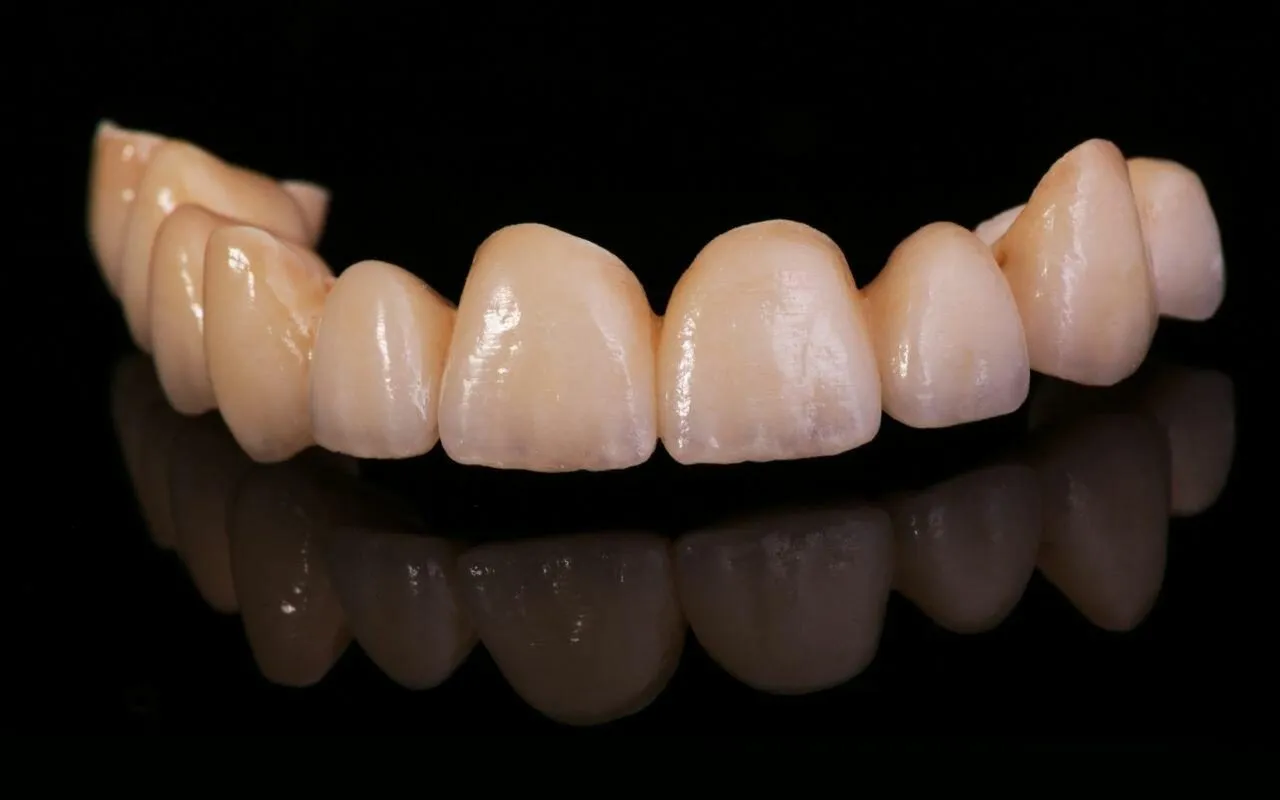
Before undertaking any teeth whitening procedure, it is essential to consider the potential risks and factors that could impact your crowns and veneers. While crowns and veneers themselves are not directly affected by whitening agents, the contrast between them and your newly whitened teeth could be a source of aesthetic concern. This is why planning is so important and working with your dentist, you can make informed decisions about how to achieve the smile you want.
Damage and Stain of Crowns and Veneers
Crowns and veneers are highly resistant to staining, but they are not entirely immune. Certain foods and drinks, like coffee, tea, red wine, and berries, can gradually stain the surface of your restorations. In addition, poor oral hygiene can lead to plaque and tartar buildup, which can affect the appearance of your crowns and veneers. While staining is less likely than with natural teeth, it can still occur. This is why it is very important to follow proper oral hygiene practices and to address any discoloration promptly. If you notice stains, consult with your dentist.
Maintaining the Aesthetics of Crowns and Veneers
Maintaining the aesthetics of your crowns and veneers involves both professional care and consistent oral hygiene. Regular dental check-ups are crucial for monitoring the condition of your restorations and addressing any potential issues early. Your dentist can also provide professional cleanings to remove any surface stains and ensure your restorations remain in optimal condition. Furthermore, using the right oral hygiene products is important. Avoid abrasive toothpastes that can scratch the surface of your restorations, and be diligent about brushing and flossing to prevent staining and maintain a healthy mouth.
Other Considerations
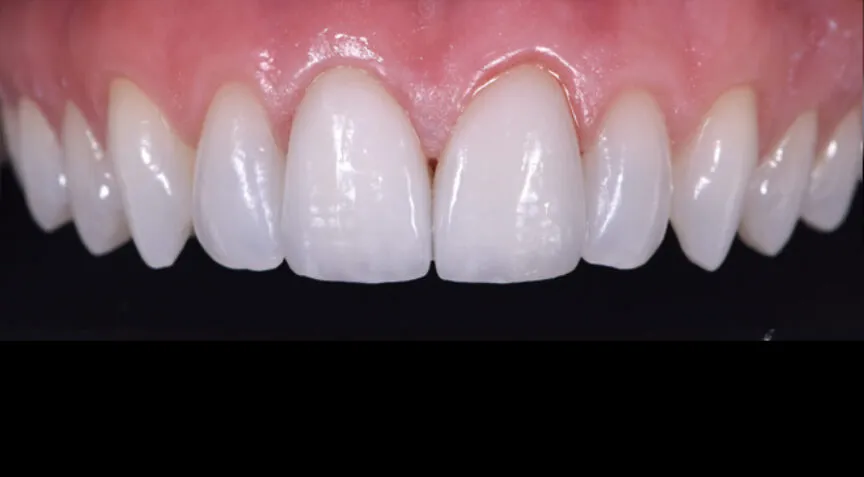
Beyond the whitening process, other factors can influence the aesthetics of your crowns and veneers. The original shade of your restorations, the age of your restorations, and the overall health of your gums and teeth all play a role. If your crowns or veneers are older, they may not match the shade of your natural teeth even without whitening. Gum recession can also expose the edges of your restorations, affecting the appearance. In addition, your overall smile design also is an important factor. This is where the dentist can give you advice to help make an informed decision.
Alternative Solutions to Teeth Whitening for Crowns and Veneers
When traditional teeth whitening isn’t an option for crowns and veneers, several alternative cosmetic dentistry solutions can help you achieve a bright, consistent smile. These include replacing the existing restorations or using other techniques to improve the overall aesthetic appearance of your teeth. These options allow you to create a smile that matches your whitened natural teeth.
Crowns and Veneers Replacement
The most direct way to address the shade mismatch between your whitened natural teeth and existing crowns or veneers is to replace the restorations. Your dentist can match the new crowns or veneers to the shade of your newly whitened teeth, ensuring a consistent and natural-looking smile. This process involves removing the old restorations, preparing your teeth, taking impressions, and then fabricating new crowns or veneers in a laboratory. This will match the shade of your natural teeth. While replacement is the most invasive option, it offers the most control over the final aesthetic outcome. However, it also involves a greater investment of time and money.
Cosmetic Dentistry Options
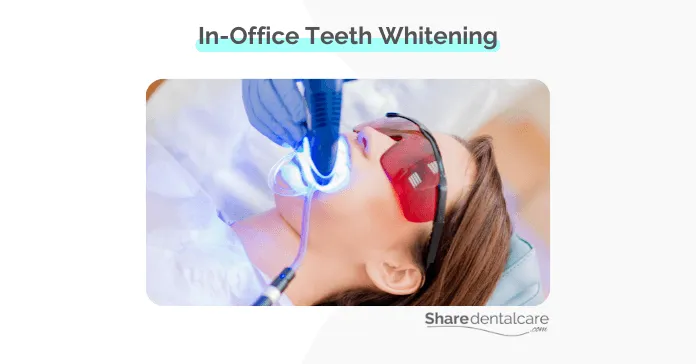
Other cosmetic dentistry options can improve the appearance of your smile in conjunction with whitening or as an alternative. Teeth contouring and reshaping can improve the shape and symmetry of your teeth, creating a more balanced look. Gum contouring can correct a gummy smile or improve the proportions of your teeth. Cosmetic bonding can be used to fill small chips or gaps in your teeth, further enhancing your smile. Discussing all these options with your dentist can help you determine which approach best suits your individual needs and aesthetic goals. With the right solutions, it is possible to achieve a beautiful, confident smile, even with crowns and veneers.
In conclusion, while teeth whitening is not effective on crowns and veneers, several strategies can help you achieve a bright and beautiful smile. Understanding the limitations of whitening and exploring alternative cosmetic options is essential for making informed decisions. Working closely with your dentist and considering a personalized approach can help you achieve the smile you’ve always wanted. Remember to prioritize good oral hygiene and maintain your smile’s health and aesthetics.
